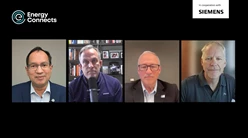US LNG expansion: balancing growth ambitions with oversupply risks
The global liquefied natural gas market stands at a crossroads. Whilst consensus has emerged that gas remains essential for energy system stability, the scale and timing of new supply additions could determine whether the industry thrives or stumbles in the coming decade.
The United States has positioned itself as the dominant force in this expansion. With abundant domestic gas resources, multiple projects recently taking final investment decisions (FID), and supportive federal policies, US LNG has captured unprecedented investment momentum. Yet beneath this success story lies a growing concern. The sheer volume of capacity under development raises fundamental questions about market balance and the risk of prolonged oversupply.
Global demand drivers remain robust
The case for expanded LNG supply appears compelling across key markets. European gas demand has proven resilient despite the energy crisis, whilst domestic production continues its structural decline. The European Union's commitment to eliminate Russian gas imports by 2028 creates an additional supply gap that LNG must fill.
Asian markets present equally strong fundamentals. Lower prices will enhance LNG's affordability and potentially trigger the next phase of demand growth. Regional supply constraints are intensifying as South and Southeast Asian domestic gas production dwindles. Egypt's recent experience—turning to LNG when pipeline imports were severed—demonstrates how quickly markets can pivot to liquefied gas.
For buyers seeking new supply, alternatives to US LNG remain limited. Qatar, the other global heavyweight, offers scale but limited near-term expansion. Projects elsewhere face persistent challenges: securing long-term gas supply, obtaining regulatory approval, and managing elevated costs. Political considerations add another dimension, with US LNG offering potential solutions to trade imbalances.
Capital markets embrace US LNG
Investment appetite for US LNG infrastructure continues deepening. Infrastructure funds including Global Infrastructure Partners, KKR, and Stonepeak have long sought the steady cash flows and limited commodity price exposure that liquefaction projects provide. These investors are now expanding their commitments significantly.
Strategic investors are equally active. Middle Eastern national oil companies, dedicated LNG players such as MidOcean, and established operators like Woodside are committing substantial capital. Their focus centres on securing offtake whilst some combine this with upstream positions in the US domestic gas market.
Debt markets remain attracted to US LNG as an efficient deployment vehicle for large capital volumes. With US renewables growth facing headwinds and banks reassessing environmental, social, and governance criteria, LNG represents the primary growth opportunity in American energy infrastructure.
Warning signs emerge
However, concerns about market exuberance are mounting. China's role as the world's largest LNG importer remains critical, yet recent data reveal softer demand patterns. Chinese LNG imports fell 18% in the first eight months of 2025 compared with the previous year.
Structural challenges compound these near-term concerns. China's planned Medog hydro project, expanded Russian pipeline gas imports, and accelerated renewable deployment pose long-term risks to LNG demand growth. Similar uncertainties affect other emerging Asian markets, where economic headwinds, coal resilience, and renewable expansion create additional demand risks.
Rising Henry Hub prices present another challenge. US LNG export expansion will require substantial domestic gas supply growth, just as artificial intelligence-driven data centre demand accelerates. Higher domestic prices could create a double impact: establishing a floor for global LNG prices that limits demand growth whilst simultaneously eroding US LNG competitiveness.
Winners and losers emerge
The collective impact of multiple US LNG projects risks pushing markets toward deeper oversupply, even if individual projects remain commercially viable. Most developers enjoy relative protection through infrastructure-style commercial frameworks and fixed fees.
European consumers could benefit most from softer prices, whilst Asian buyers with firm demand can secure long-term contracts at attractive levels. US LNG offtakers face the greatest margin pressure, though the trading optionality inherent in US contracts provides mitigation opportunities.
Unlike traditional point-to-point contracts, the free-on-board structure allows offtakers to direct volumes wherever they maximise portfolio value. Increased market volatility will amplify trading opportunities. Whilst offtakers might face periods of compressed margins—potentially triggering cargo cancellations—maximum losses remain limited to contracted liquefaction fees. Conversely, profit potential during price spikes remains unlimited.
Reality check required
The LNG industry may benefit from reassessing current expansion plans. Conversations with industry participants reveal growing awareness of downside risks and oversupply concerns. This isn't about deflating the LNG market but ensuring the industry remains positioned to deliver sustainable growth.
The challenge lies in balancing legitimate supply needs against the risk of market saturation. With more than 200 mmtpa of global LNG capacity currently under construction—equivalent to 50% of existing supply—timing becomes crucial.
Success will depend on matching supply additions with genuine demand growth whilst maintaining commercial viability across the value chain. The industry's ability to navigate this balance will determine whether the current expansion cycle delivers long-term value or creates prolonged market disruption.
As the US LNG boom continues, stakeholders must weigh growth ambitions against market realities. The world needs more LNG, but getting the scale and timing right remains the ultimate challenge.
Energy Connects includes information by a variety of sources, such as contributing experts, external journalists and comments from attendees of our events, which may contain personal opinion of others. All opinions expressed are solely the views of the author(s) and do not necessarily reflect the opinions of Energy Connects, dmg events, its parent company DMGT or any affiliates of the same.






